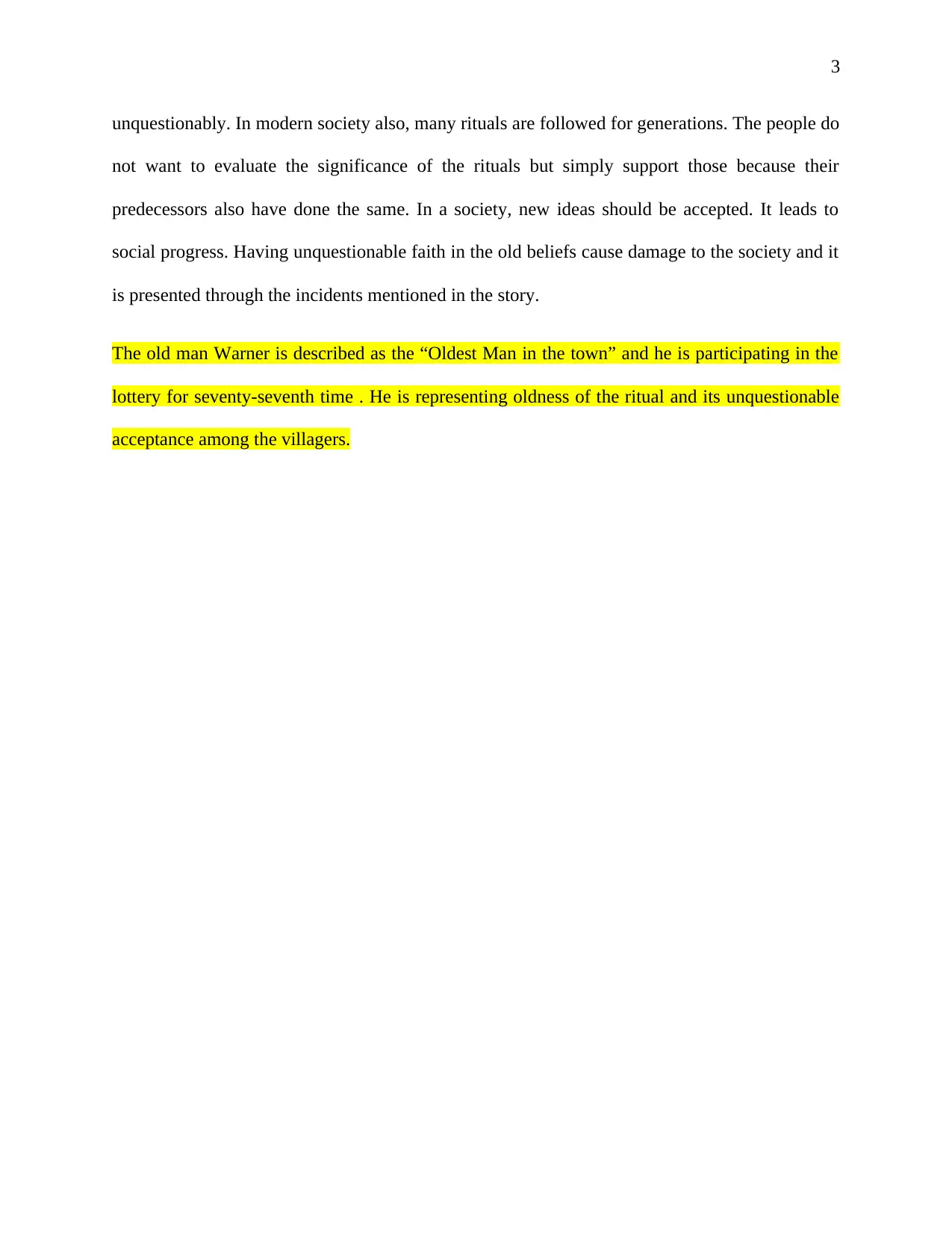Symbolism in Literature Essay
VerifiedAdded on 2019/09/23
|4
|831
|259
Essay
AI Summary
This essay analyzes the symbolism employed in Ursula Le Guin's "The Ones Who Walk Away from Omelas" and Shirley Jackson's "The Lottery." In "Omelas," the suffering child symbolizes societal injustice, selfishness, and the conflict between individual morality and societal norms. The citizens' acceptance of the child's suffering represents their prioritization of collective prosperity over individual conscience, while those who leave Omelas demonstrate a commitment to moral principles. In "The Lottery," the lottery itself symbolizes blind adherence to outdated and irrational traditions, the black box represents death and the decay of these traditions, and Old Man Warner embodies the stubborn resistance to change. Both stories highlight the dangers of unquestioning acceptance of societal norms and the importance of individual moral responsibility.
1 out of 4






![[object Object]](/_next/static/media/star-bottom.7253800d.svg)